Riboson | 5 mg | Tablet | 10 pcs
৳ 3.00
Brand Name: Riboson Tablet
Generic: Riboflavin
5 mg
Manufacturer: Jayson Pharma Ltd.
Unit Price: ৳ 0.30 (50 x 10: ৳ 150.00)
Indications
Preventing and treating riboflavin deficiency and conditions related to riboflavin deficiency.
Cataracts, an eye disorder. People who eat more riboflavin as part of their diet seems to have a lower risk of developing cataracts. Also, taking supplements containing riboflavin plus niacin seems to help prevent cataracts.
High amounts of homocysteine in the blood (hyperhomocysteinemia). Some people are unable to convert the chemical homocysteine into the amino acid methionine. People with this condition, especially those with low riboflavin levels, have high amounts of homocysteine in the blood. Taking riboflavin for 12 weeks seems to reduce homocysteine levels by up to 40% in some people with this condition. Also, certain antiseizure drugs can increase homocysteine in the blood. Taking riboflavin along with folic acid and pyridoxine seems to lower homocysteine levels by 26% in people with high homocysteine levels due to antiseizure drugs.
Migraine headaches. Taking high-dose riboflavin (400 mg/day) seems to significantly reduce the number of migraine headache attacks. However, taking riboflavin does not appear to reduce the amount of pain or the amount of time a migraine headache lasts. Also, taking lower doses of riboflavin (200 mg/day) does not seem to reduce the number of migraine headache attacks.
Therapeutic Class
Pharmacology
Riboflavin is a B vitamin. It can be found in certain foods such as milk, meat, eggs, nuts, enriched flour, and green vegetables. Riboflavin is frequently used in combination with other B vitamins in vitamin B complex products. Vitamin B complex generally includes vitamin B1 (thiamine), vitamin B2 (riboflavin), vitamin B3 (niacin/niacinamide), vitamin B5 (pantothenic acid), vitamin B6 (pyridoxine), vitamin B12 (cyanocobalamin), and folic acid. However, some products do not contain all of these ingredients and some may include others, such as biotin, para-aminobenzoic acid (PABA), choline bitartrate, and inositol.
Riboflavin is used for preventing low levels of riboflavin (riboflavin deficiency), cervical cancer, and migraine headaches. It is also used for treating riboflavin deficiency, acne, muscle cramps, burning feet syndrome, carpal tunnel syndrome, and blood disorders such as congenital methemoglobinemia and red blood cell aplasia. Some people use riboflavin for eye conditions including eye fatigue, cataracts, and glaucoma.
Other uses include increasing energy levels; boosting immune system function; maintaining healthy hair, skin, mucous membranes, and nails; slowing aging; boosting athletic performance; promoting healthy reproductive function; canker sores; memory loss, including Alzheimer’s disease; ulcers; burns; alcoholism; liver disease; sickle cell anemia; and treating lactic acidosis brought on by treatment with a class of AIDS medications called NRTI drugs.
Dosage & Administration
For treating low levels of riboflavin (riboflavin deficiency) in adults: 5-30 mg of riboflavin (Vitamin B2) daily in divided doses.
For preventing migraine headaches: 400 mg of riboflavin (Vitamin B2) per day. It may take up to three months to get best results.
For preventing cataracts: a daily dietary intake of approximately 2.6 mg of riboflavin (Vitamin B2) has been used. A combination of 3 mg of riboflavin (Vitamin B2) plus 40 mg of niacin daily has also been used.
The daily recommended dietary allowances (RDAs) of riboflavin (Vitamin B2) are:
- Infants 0-6 months: 0.3 mg
- Infants 7-12 months: 0.4 mg
- Children 1-3 years: 0.5 mg
- Children 4-8 years: 0.6 mg
- Children 9-13 years: 0.9 mg
- Men 14 years or older: 1.3 mg
- Women 14-18 years: 1 mg
- Women over 18 years: 1.1 mg
- Pregnant women: 1.4 mg
- Breastfeeding women: 1.6 mg
Interaction
Side Effects
Pregnancy & Lactation
Storage Conditions
| Generic Name | Riboflavin |
|---|---|
| Size | 5 mg |
Only logged in customers who have purchased this product may leave a review.



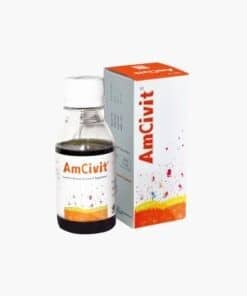
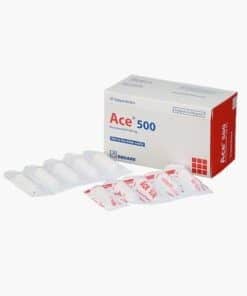
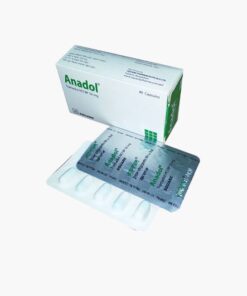
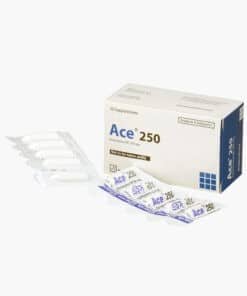


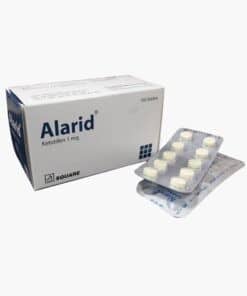
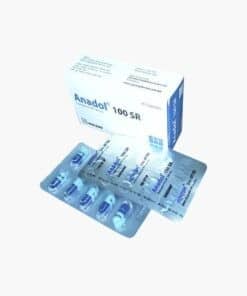
Reviews
There are no reviews yet.